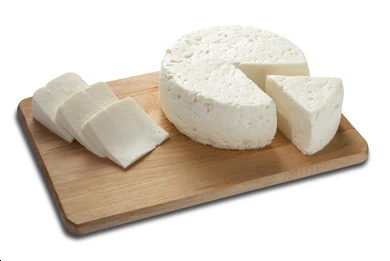Making queso fresco is a straightforward way to enjoy a fresh cheese that’s widely used in Latin American dishes and gaining popularity in Australia. This soft, mild cheese is traditionally made from cow’s milk and is known for its creamy texture and slightly salty taste. Queso fresco can be enjoyed on its own or added to a variety of dishes, much like Indian cheese paneer or ricotta. Its fresh, mild flavour makes it a perfect addition to salads, enchiladas, and grilled recipes.
What Makes Queso Fresco Unique?
Queso fresco, meaning “fresh cheese” in Spanish, is a staple in many homes and stores across Latin America and is now available in Australia. It’s easy to make and doesn’t require aging, so you can serve it the same day. This cheese is soft, creamy, and has a mild, salty taste, making it ideal for a range of recipes. You can add herbs or spices to create your own variety, and it’s perfect for those who want a fresh cheese that’s similar to paneer or fetta.
Ingredients and Equipment
Ingredients
7.5 L full cream cow’s milk
1/16 teaspoon Bioprox M265 Mesophilic Culture
1/8 teaspoon liquid animal rennet (dissolved in 2 tablespoons of unchlorinated cool water)
Cheese salt
1/8 teaspoon calcium chloride (for pasteurised milk, diluted in 30 ml unchlorinated water)
Herbs and spices (optional)
Equipment
Large stainless steel pot
Thermometer
Spoon or ladle
Knife or curd cutter
Colander
Cheese cloth or butter muslin
Cheese hoops
Draining mat
Cheese press
Cheese Kettle supplies a range of cheese-making equipment, including cheese presses and cheese hoops, suitable for making queso fresco and other fresh cheeses at home or for wholesale production.
Step-by-Step Instructions
Before starting, sterilise all your equipment to ensure your cheese is safe and fresh.
Heat the milk to 32°C.
If using pasteurised milk, add the diluted calcium chloride and stir gently.
Sprinkle the mesophilic starter culture over the milk. Let it rehydrate for one minute, then stir gently for another minute.
Keep the milk at 32°C.
Add the rennet and stir gently for one minute.
Cover the pot and let the milk set for 30 to 45 minutes, or until you get a clean break. To check, insert a knife into the curd; if the curd separates cleanly, it’s ready.
Cut the curd into 6 mm cubes.
Stir the curds gently. Over 15 to 20 minutes, gradually increase the temperature to 35°C, stirring to prevent the curds from sticking together.
Once at 35°C, let the curds rest for 5 minutes.
Line a colander with cheesecloth or butter muslin.
Carefully ladle the curds into the lined colander to drain the whey.
Return the curds to the pot, add cheese salt, and mix well.
Let the curds sit at 35°C for 30 minutes. More whey will be released during this time.
Line a cheese hoop with cheesecloth.
Ladle the curds into the cheese hoop.
Press the cheese at 16 kg of pressure for 5 to 6 hours.
Remove the cheese from the mold and place it in a covered container. Refrigerate and consume within two weeks.
Ways to Enjoy Queso Fresco
Queso fresco is perfect for a range of dishes. Here are some ways to use this cheese:
Crumble it over salads or use as a topping for enchiladas and tacos.
Add to grilled corn or use as a filling for quesadillas and burritos.
Substitute for paneer, ricotta, or fetta in recipes.
Serve it fresh as a table cheese or in cooked dishes where a soft, mild cheese is needed.
Enjoy it as a creamy, salty garnish for soups or as a rich addition to a cheese platter.
Queso fresco doesn’t melt like some cheeses but softens when heated, making it suitable for grilling or serving warm.
Thinking About Making Cheese in Australia?
If you’re interested in making queso fresco in Australia or want to buy cheese-making equipment for home or business, Cheese Kettle can help. We offer supplies for fresh cheese, including everything you need to make soft cheeses like paneer, ricotta, and queso fresco. For those considering starting a cheese business, we also provide consultancy and support.
Get Started with Queso Fresco
Making queso fresco at home is easy and rewarding. Whether you’re looking to add a fresh, creamy cheese to your favourite dishes or want to try your hand at cheese making for the first time, we have the products and support you need. Discover our premium cheese kettles designed for efficient and consistent cheese production-visit our products page to view the full range of equipment. Contact us by email or visit our store to buy supplies or to learn more about cheese making in Australia.







